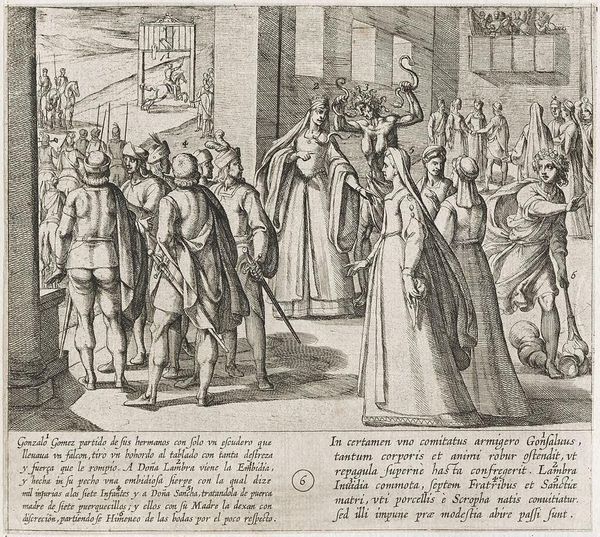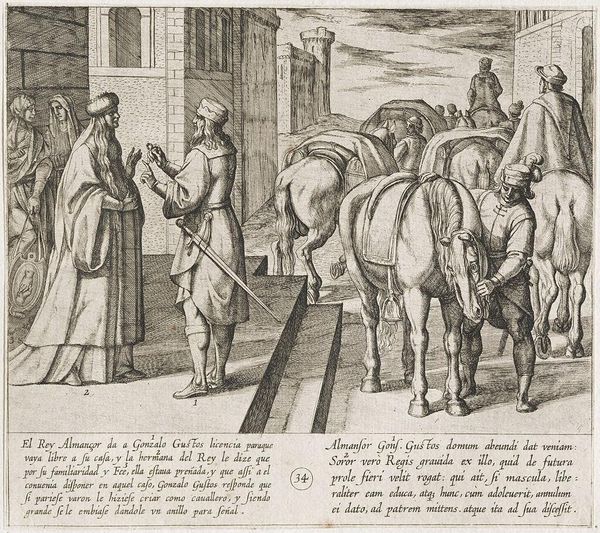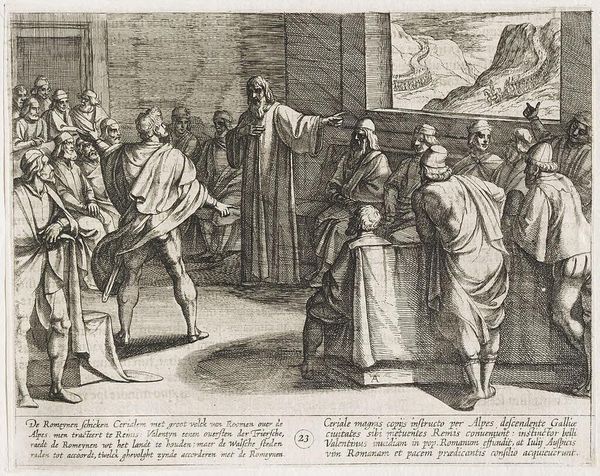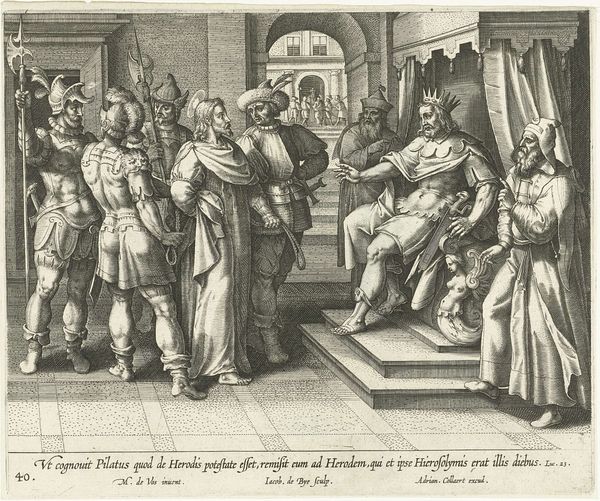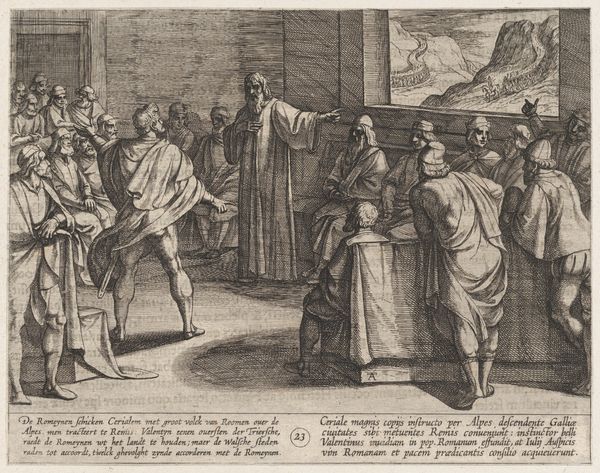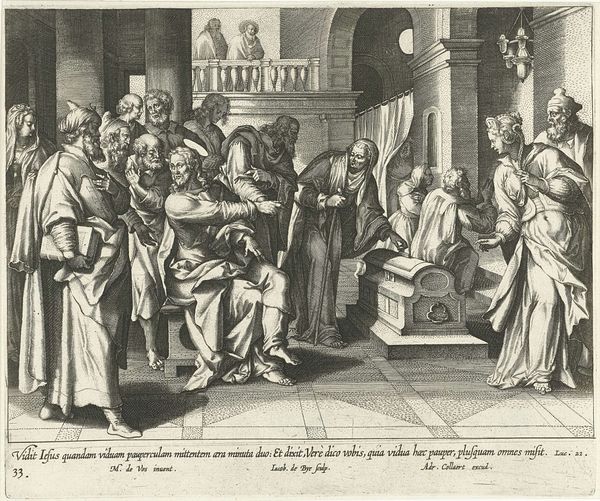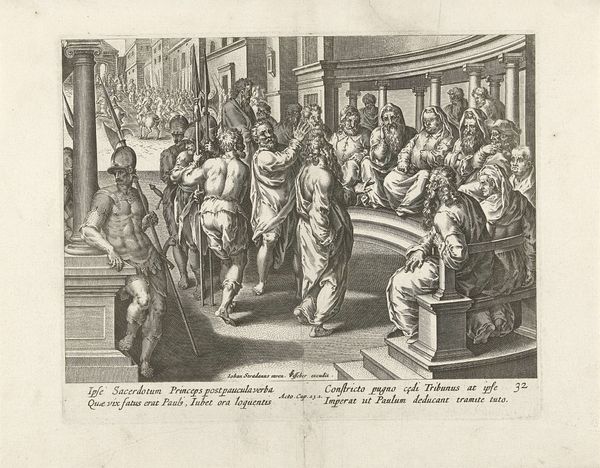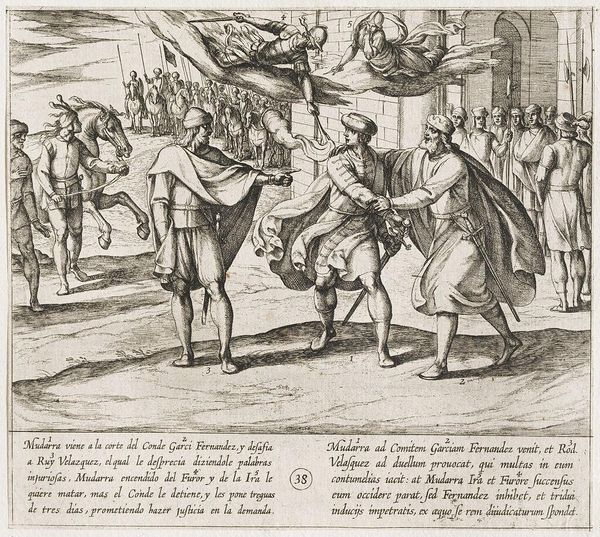
Mudarra Takes Leave of His Mother and Sets Out to Find His Father 1612
0:00
0:00
Copyright: CC0 1.0
Curator: This is Antonio Tempesta's "Mudarra Takes Leave of His Mother and Sets Out to Find His Father." Editor: It's stark, almost theatrical. The rigid figures and sharp lines create a sense of impending drama. Curator: Indeed. Tempesta, who lived from 1555 to 1630, visualizes a specific moment laden with cultural weight. Editor: Look at the symbolic weight of the figures surrounding Mudarra. He is being gifted honor and virtue before embarking on a quest for his father. Curator: The scene is steeped in patriarchal notions of legacy and vengeance, isn’t it? Mudarra seeks to avenge his father and brothers. It underscores the social pressures and expectations tied to male identity in that era. Editor: And the ring he receives! A powerful symbol of identity, a cultural marker allowing him to be recognized by his father. It speaks to the importance of lineage and inheritance. Curator: Considering Tempesta's historical context allows us to examine how narratives of family and honor were constructed and perpetuated through art. Editor: Precisely. It makes one consider how deeply ingrained such symbolic structures are, even today.
Comments
No comments
Be the first to comment and join the conversation on the ultimate creative platform.
